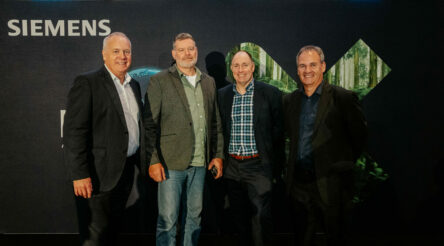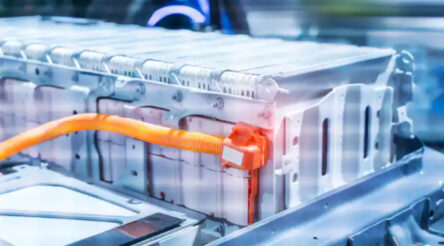Sydney haem team makes nanowires out of modified protein filaments, suggesting possibility of ‘green electronics’

University of NSW Sydney researchers have assembled “protein nanowires” created by engineered bacteria and found that these were able to conduct electricity over short distances and even create it out of thin air.
According to a statement from UNSW on Monday, the team used protein filaments created by E. coli (a bacteria that can cause food poisoning.)
“We modified the DNA of E. coli so that the bacteria not only produced the proteins that it needed to survive, but also built the specific protein we had designed, which we then engineered and assembled into nanowires in the lab,” said Dr Lorenzo Travaglini, lead author on the new paper in Small and a postdoc at the university’s School of Biotechnology and Biomolecular Sciences.
The filaments had the material haem – an iron-containing molecule found in haemoglobin, and alternatively spelled “heme” – incorporated into them, which made them able to transport electrons.
According to the university, a stronger current was detected under ambient conditions of 20 to 30 per cent humidity.
The researchers then carried out further tests, “using thicker amounts of the material, sandwiched between two gold electrodes”.
Travaglini added that, “We’ve proposed that the humidity created a gradient of charge across the depth of the material. And this unbalanced charge across the film is able to create a short current, without having to apply any potential at all.”
A simple humidity sensor was then made.
Travaglini said that the research was at an early stage, but suggested the possibility of electronic devices made out of non-toxic, low-power, sustainable materials.
“The electronics we tend to use are created through processes that require high temperatures and are very energy-demanding. They’re not green, and the materials they are sourced from can be toxic,” he said.
“Using biomaterials to create electricity is far more environmentally friendly. We can produce these filaments from bacteria, and it’s scalable.”
Travaglini is supervised by Dr Dominic Glover from the school’s SYNbioLAB.
The team’s article, “Fabrication of Electronically Conductive Protein-Heme Nanowires for Power Harvesting”, can be accessed here.
Picture: credit UNSW
@aumanufacturing Sections
Analysis and Commentary Awards Defence Manufacturing News Podcast Technology Videos









